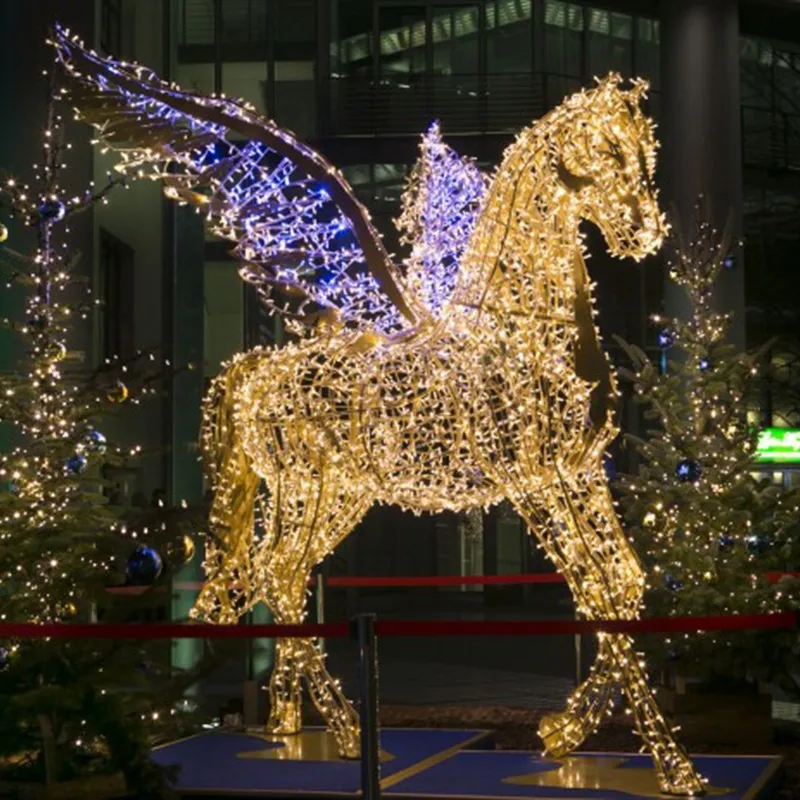

- #SIMPLE CHRISTMAS LIGHT DISPLAYS INSTALL#
- #SIMPLE CHRISTMAS LIGHT DISPLAYS SOFTWARE#
- #SIMPLE CHRISTMAS LIGHT DISPLAYS TRIAL#
Yaglenski says his neighbors haven’t ever complained and see it as a community tradition, though he’s had to install night-vision cameras to deter vandals who have stolen display elements in past years. “You have some neighbors who live in cul-de-sacs who can’t get home because of the traffic,” he said.

We haven’t needed Pepco (the local utility) to add a second line,” he says with a laugh.īurgess also says that often neighbors get upset with the spectators the light shows bring. “It varies, but because the lights are on a computer timer and we have set hours, it probably only adds about $100 to our bill. So homeowners with light shows can have electric bills in the five-digits come January as a result of their holiday displays, he says.Īs for the electric bill for his month-long synchronized display, Yaglenski says it isn’t as bad as you think. However, that adds another $40 for each song, according to the company’s website.Īll told, you could be spending several thousand dollars just on synchronization equipment, not including the electricity, Burgess says.
#SIMPLE CHRISTMAS LIGHT DISPLAYS SOFTWARE#
You can program the lights yourself, but companies like Light-O-Rama, a South Glens Falls, N.Y.-based synchronized lighting company that makes equipment for both residential and commercial displays, has some shortcuts, such as pre-programmed software that runs your lights to popular Christmas songs (music not included). An electronic channel switch to animate and time each element of the show can cost about $25, so if you want to have 10 individually dancing Santas on your lawn, you could be looking at $250, he says. The cost for a synchronized musical system isn’t cheap, says Burgess. “For the newcomers today it’s a lot easier, but there’s a good bit of work involved, getting the lights timed to the song’s tempo.”
#SIMPLE CHRISTMAS LIGHT DISPLAYS TRIAL#
“A lot of these guys managed to shock themselves dozens of times through trial and error building their own systems,” he says. The first amateur musical displays started in the 1960s, Burgess says, but it wasn’t until the early 2000s when video and radio editing software began appearing that made it more widespread. A low-powered FM transmitter allows visitors to listen to the music over the radio while in their cars.Īt first, animated and musical displays were only the domain of serious electronics hobbyists, says Matt Burgess, a 35-year-old website developer in Alpharetta, Ga., who runs, an online repository of information about 500 residential animated light displays nationwide and around the world. Yaglenski’s show has more than 30 channels, and each must be coordinated and synchronized to music.Īnd while some homeowners like to synchronize their Christmas home displays to Motley Crue or Metallica, Yaglenski opts for traditional Christmas tunes, such as the Charlie Brown Christmas theme “Linus and Lucy” and “Sleigh Ride,” performed by the Boston Pops, and Wizards in Winter from the Trans-Siberian Orchestra. The building block of these displays is an electronic device called a channel that runs the lights of a specific element of the display (like an animatronic Santa or a reindeer) in time with the music. About two-thirds of Americans shopping for the holidays plan to buy decorations this holiday season, the trade group said.Īnybody can hang static Christmas lights, but to synchronize those lights to music, it takes computing power, calculating wattage and amperage, and a lot of time-consuming programming. says, or an average of about $80 per family. “There is something very cool about watching cars queue up in front of your house to see the display along with watching the faces of the children of the neighborhood as they take it all in,” he says.Īll told, Americans will spend $7.2 billion on holiday decor this season, including electric lights, up from $5 billion in 2005, the National Retail Federation trade group in Washington D.C. beginning in early December and runs it until the beginning of January. Yaglenski usually turns on the lights for a nightly three-hour show starting at 6 P.M. “I like to call our display ‘tastefully tacky’ and think of it as the North Pole through a child’s eyes,” Yaglenski says. John Yaglenski, the director of communications and IT with the Institute of Electrical and Electronics Engineers’ IEEE-USA, and a homeowner in Urbana, Md., has been turning his single-family house into a musical light show during the holidays since 2002 with dozens of animated reindeer, trains, sleighs, polar bears, Santas, and characters from the “Nutcracker.” Yaglenski, 49, says the display, which takes him and his family about a week to set up, needs more than three dozen heavyweight extension cords and requires enough electrical wiring to stretch to the top of the Empire State Building. And these days people like to take it even further, and set the light shows to music.


 0 kommentar(er)
0 kommentar(er)
